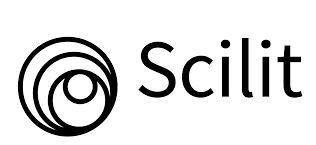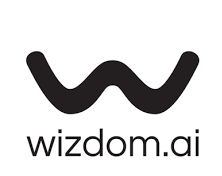Pengaruh Jumlah Sel Elektroda Terhadap Produksi Gas Hidrogen dengan Proses Elektrolisis sebagai Sumber Energi Fuel Cell
DOI:
https://doi.org/10.32734/jtk.v14i1.18064Abstract
Hydrogen is an environmentally friendly, carbon-free renewable energy source that can be generated through reactions with oxygen to produce electricity. One method of producing hydrogen is via water electrolysis. The aim of this study was to determine the optimal conditions for hydrogen gas production, specific energy consumption, and the use of hydrogen gas as an energy source for Proton Exchange Membrane (PEM) fuel cells, using potassium hydroxide (KOH) at concentrations of 0.1 M, 0.2 M, 0.3 M, and 0.4 M. The electrolysis process was conducted at a voltage of 10 volts for 30 minutes. The results showed that the highest hydrogen gas production, 0.8927 L, was achieved with 18 electrode cells and a KOH concentration of 0.3 M. The optimal specific energy consumption was 33,269 joules under the same conditions. The maximum efficiency of the PEM fuel cell was 47.25%, while the minimum efficiency was 44.80%
Downloads
References
W. Ajeeb, R. Costa Neto, and P. Baptista, “Life cycle assessment of green hydrogen production through electrolysis: A literature review,” Sustainable Energy Technologies and Assessments, vol. 69, no. April, 2024.
M. Muthaharussayidun, S. Anis, and W. Aryadi, “Uji Produksi Gas Hidrogen Melalui Elektrolisis Plasma Air Laut Dengan Katalis Koh Dan Zat Aditif Etanol,” Jurnal Inovasi Mesin, vol. 1, no. 1, pp. 14–21, 2019.
S. J. Muchtar and C. E. Rustana, “Studi Pengaruh Jenis Elektroda Terhadap Produksi Gas Hidrogen Dengan Proses Elektrolisis Air,” vol. IX, pp. 5–8, 2020.
D. Lestari Ayu, “Pengaruh Variasi Jumlah Elektroda Dan Jenis Katalis Terhadap Produksi Gas Hidrogen Pada Elektrolisis Air Laut,” Jurnal Pendidik Indonesia, vol. 5, no. 2, pp. 1–11, 2022.
M. A. Siregar, K. Umurani, and W. S. Damanik, “Pengaruh Jenis Katoda Terhadap Gas Hidrogen Yang Dihasilkan Dari Proses Elektrolisis Air Garam,” Media Mesin: Majalah Teknik Mesin, vol. 21, no. 2, pp. 57–65, 2020.
B. Yohandri, “Produksi Gas Hidrogen Ditinjau dari Pengaruh Duplex Stainless Steel Terhadap Variasi Konsentrasi Katalis dan Jenis Air yang Dilengkapi Arrestor,” vol. 11, no. 03, pp. 46–52, 2020.
F. M. Sarira, A. Z. Syaiful, and M. Tang, “Pemanfaatan Energi Surya Dalam Pembuatan Gas Hidrogen Melalui Proses Elektrolisis air dengan Variasi Katalis KOH, NaCl DAN NaHCO3,” Saintis, vol. 2, no. 2, pp. 52–56, 2021.
W. D. Callister Jr and D. G. Rethwisch, Characteristics, Application, and Processing of Polymers. 2003.
M. P. Novoa, C. Rengifo, M. Cobo, and M. Figueredo, “Techno-economic assessment of the Synthetic Natural Gas production using different electrolysis technologies and product applications,” Int J Hydrogen Energy, vol. 78, no. July, pp. 889–900, 2024.
F. Ben Mhahe, Y. Zhang, C. Chen, and W. I. Umoren, “Investigation of the influence of different types of electrolytes on the performance of the Electrochemical Discharge Machining process during micromachining of molybdenum,” Int J Electrochem Sci, vol. 19, no. 7, p. 100647, 2024.
M. W. Aditya and I. Febriana, “Efektivitas Tegangan Terhadap Produksi Gas Hidrogen Melalui Proses Elektrolisis Air Laut,” vol. 7, no. 2020, pp. 30047–30053, 2023.
D. Fahreza, D. Kurniawati, N. Subeki, and K. Person, “Analisis Produksi Gas Hidrogen Dan Gas Oksigen Dalam Proses Elektrolisis,” Prosiding SENTRA (Seminar Teknologi dan Rekayasa), vol. 0, no. 4, pp. 50–54, 2019.
L. Fan, Z. Tu, and S. H. Chan, “Recent development of hydrogen and fuel cell technologies: A review,” Energy Reports, vol. 7, pp. 8421–8446, 2021, doi: 10.1016/j.egyr.2021.08.003.
M. El-Shafie, “Hydrogen production by water electrolysis technologies: A review,” Results in Engineering, vol. 20, no. July, p. 101426, 2023.
S. G. Nnabuife, A. K. Hamzat, J. Whidborne, B. Kuang, and K. W. Jenkins, “Integration of renewable energy sources in tandem with electrolysis: A technology review for green hydrogen production,” Int J Hydrogen Energy, vo. 107, pp. 218-240, 2025.
Downloads
Published
Issue
Section
License
Copyright (c) 2025 Jurnal Teknik Kimia USU

This work is licensed under a Creative Commons Attribution-ShareAlike 4.0 International License.

















